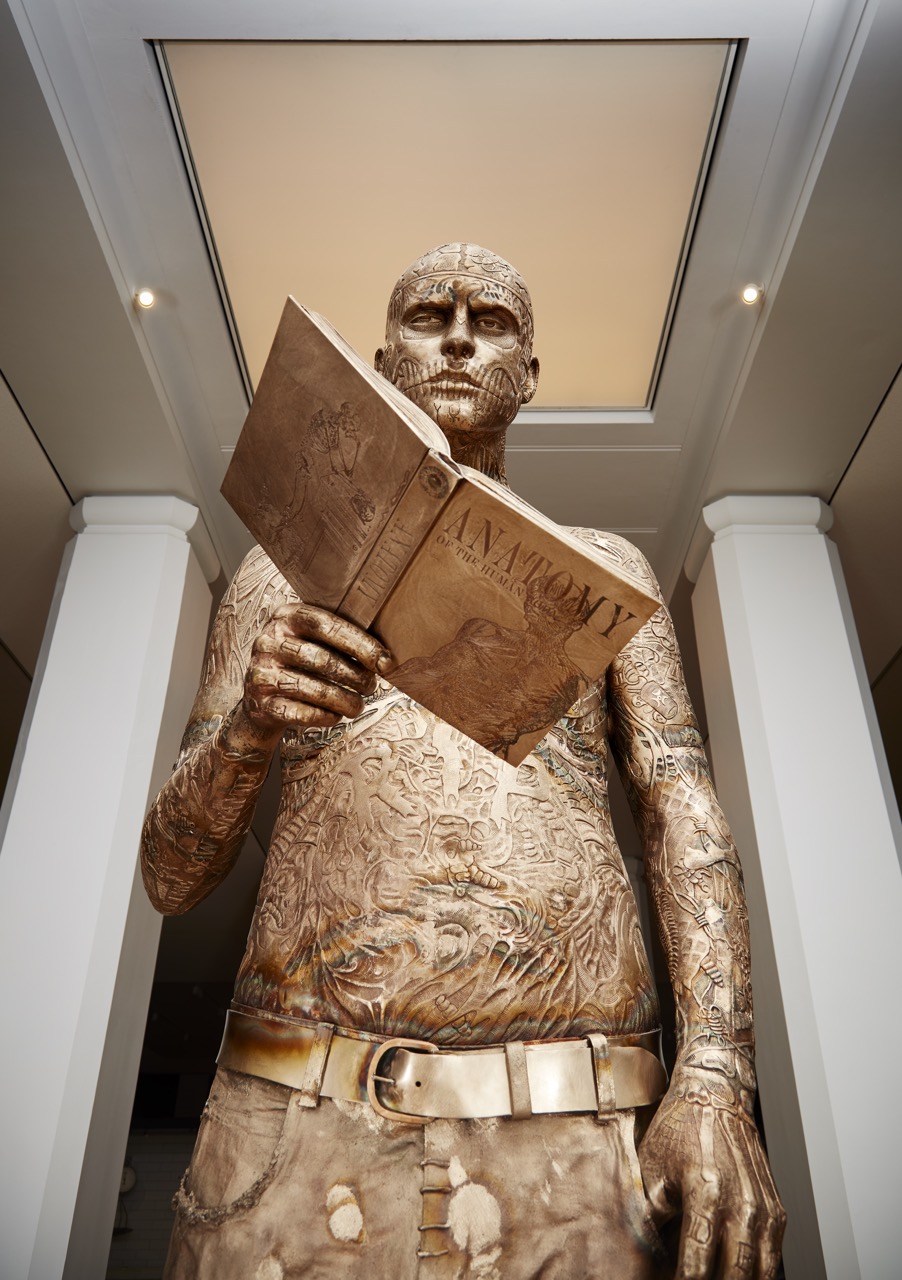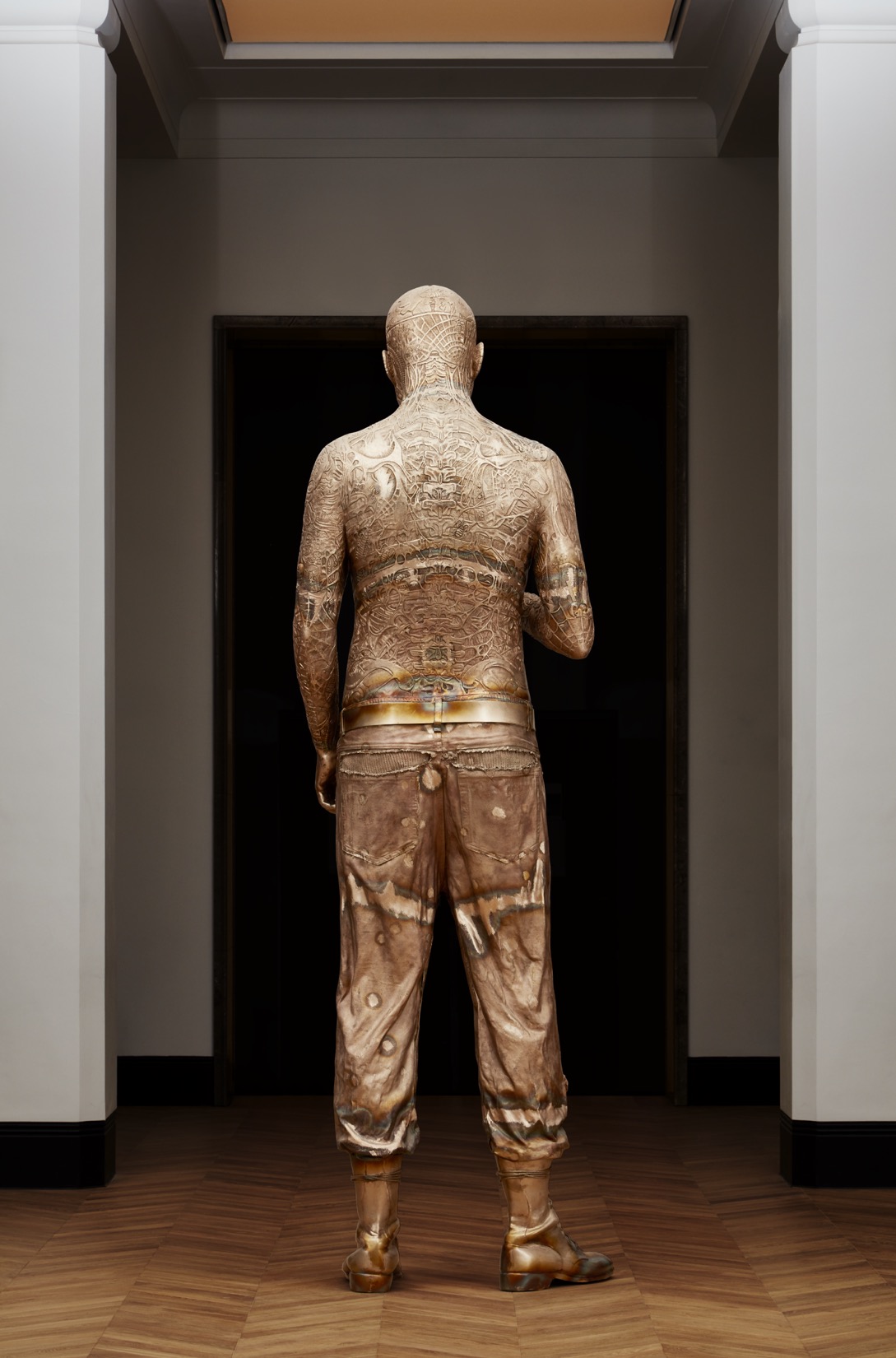Artwork Details:
- TypeSculpture
- Year2017
- MediumBronze
- Dimensions350h x 110w x 69d cm (approximate)
More about this artwork:
Self-conscious Gene is a monumental bronze sculpture commissioned by the Science Museum in London, which holds a world-class public collection of scientific, technological and medical advancement from across the globe. At 3.5m (11’6”) tall, the sculpture towers over the audiences it welcomes to the museum’s Medicine Galleries, which house over three thousand extraordinary medical artefacts from human history. Self-conscious Gene depicts Rick Genest, popularly known as ‘Zombie Boy’, who began covering his body with tattoos of his complete skeleton following a period of illness. The sculpture evolved from Quinn’s Body Alteration series, which explores how, using modern medicine and technology, people have modified their outer bodies to reflect the identity they wish to project—bringing the inside out.
Through this sculpture Quinn explores the deep desire held by humans to understand their bodies and personal histories. In this work, the figure holds an encyclopaedia of anatomy and the tension between the book and figure creates a meditative atmosphere. Having first sat for Quinn in 2010, Genest sadly passed away during the creation of this monumental work in 2018, which now also serves as a memorial to a unique individual who inspired a generation.
“After a period of illness Rick Genest began to have the inside of his body drawn onto his skin by a tattoo artist. Literalising a quest to understand his own body, his tattoos are a kind of poetry. His ritual mirrors our quest through medicine to understand and fix ourselves. It seemed to me that this was exactly what was needed in the Science Museum, one of my favourite museums in London, and one which I’ve been visiting since I was a child. The Museum is a mixture of knowledge, art and wonder. I hope that this sculpture will add to all three of these elements.”- Marc Quinn
“Artists and scientists have helped shape our sense of the body and health, and placed medicine as central to our culture. That is why we wanted to position new art commissions alongside the richly visual medical artefacts in our existing collection, to help visitors consider anew their relationship with medicine. It has been a personal ambition of mine to work with Marc Quinn for more than two decades, and I am sure our millions of visitors will be both fascinated and challenged by this remarkable sculpture for many years to come.” - Ian Blatchford, Director of the Science Museum




